[Photographs: Vicky Wasik. Video: Serious Eats Video]
Silky custards and ice creams wouldn’t be the same without the thickening power of eggs. Eggs have the unique ability to set milk and cream into a freestanding flan, a pourable crème anglaise, and many things in between. They’re not limited to pairing with dairy, either: Eggs are also the key to a silky and tender chawanmushi and creamy avgolemono, the Greek lemon-and-chicken soup.
As easy as it is to harness the power of eggs for good, it can also go wrong all too quickly. If you drop an egg into hot liquid, it will scramble, leaving you with a broken, weeping, and curdled custard or sauce. The keys to preventing this from happening are gradual heat and dilution. This is often achieved through the process of tempering, in which you slowly add some of the hot liquid to the eggs while vigorously whisking, before combining it all.
Sometimes you need to temper your eggs, and sometimes you don’t. Here’s everything you need to know about egg-tempering, so the next time you’re whipping up a custard, you can keep those eggs from creeping over to the dark side.
The Incredible Egg-lastic Proteins
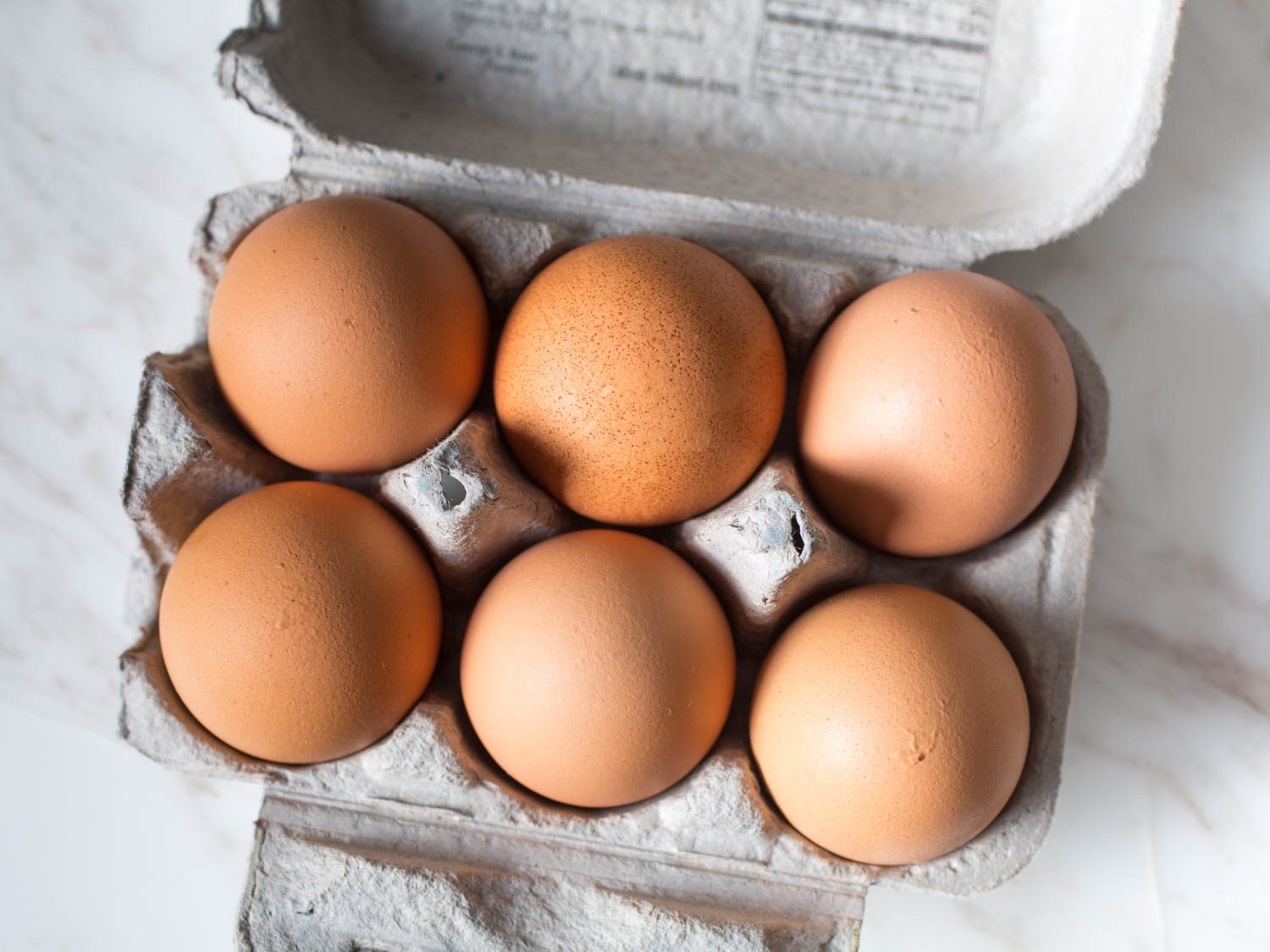
In their raw state, egg proteins are tightly coiled bundles that float independently in an aqueous solution—there’s nothing exciting or impressive about them at this stage. But as heat or agitation is applied, these bundles begin bumping into each other, causing them to unravel. As the egg proteins unfurl, they link up to form a large mesh network. This mesh network is like a rigid scaffolding, and it’s what gives cooked eggs their firm texture. Beat air into the eggs, and the mesh network will fill up with billions of entrapped air bubbles, resulting in a stable and fluffy meringue or soufflé.
If too much heat or agitation is applied, the proteins will bond to each other too tightly, causing them to squeeze together and push out liquid or air that they previously held within, like a sponge being wrung out. This is why overcooked eggs become rubbery and weep liquid, why over-whipped meringue becomes dry, and why overheated custard curdles.
To prevent this, the first step is to dilute those egg proteins. Diluting the eggs with a liquid, sugar, or starch spreads the proteins farther apart, reducing the likelihood that they’ll bump into each other. Add heat or agitation now, and they’ll eventually collide and bond just like before, but it’ll happen a lot more gradually. Diluted egg proteins can still overheat, with disastrous results, but you can bring them to a higher temperature before it happens.
Gradual heat is the second key to setting a perfect protein matrix. You’re more likely to reach the correct final temperature for a custard or flan—and not overshoot it—if you go low and slow.
When gradual heat combines forces with dilution, you can kick curdles and broken custards to the curb.
When You Need to Temper
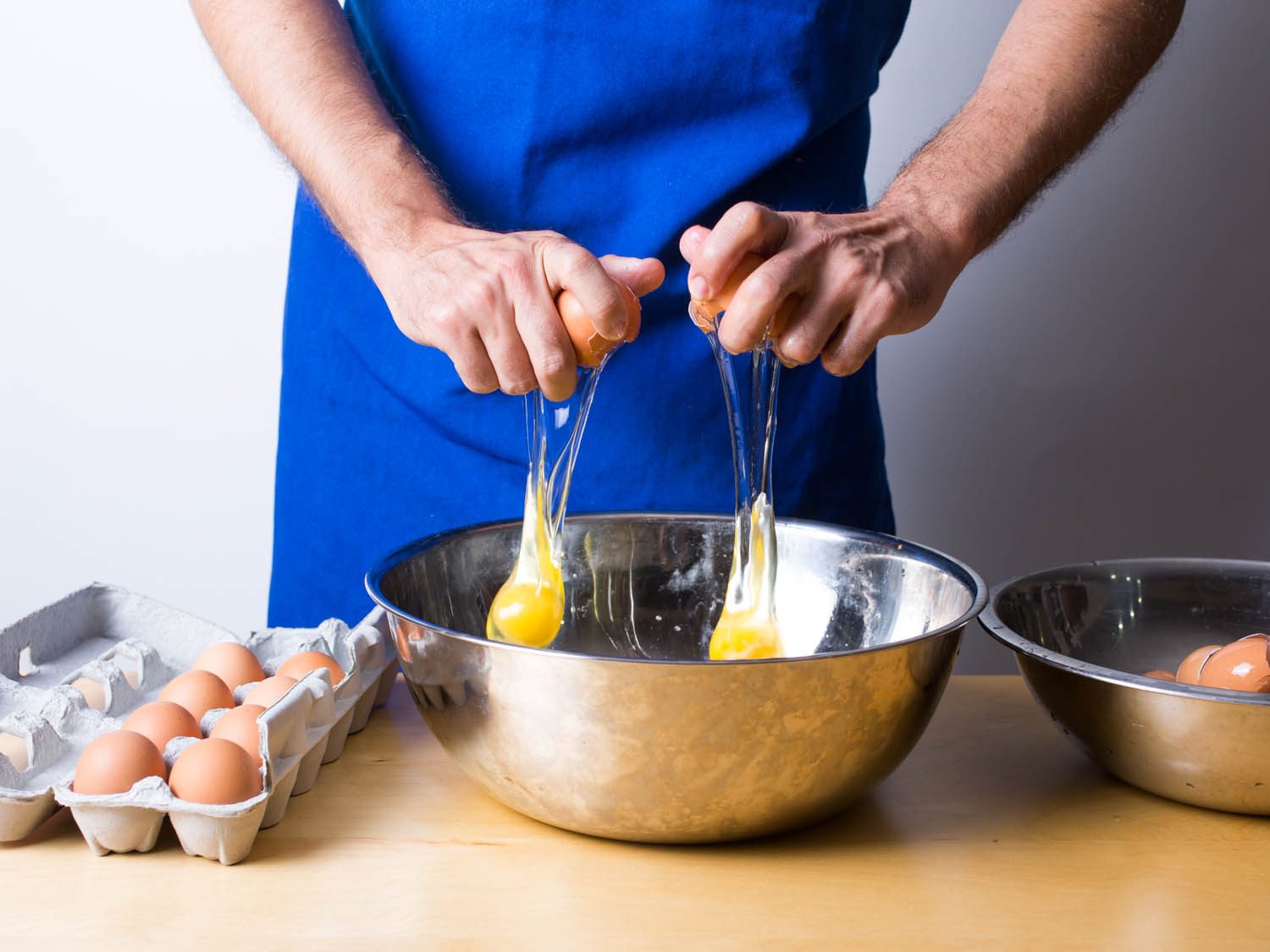
Recipes for custards and other egg-thickened dishes require combining the eggs with the liquid to be thickened. Most reflexively call for a tempering step—in which hot liquid is whisked into the eggs, after which that diluted egg mixture is whisked back into the rest of the hot liquid—to ensure the eggs don’t scramble.
But this step is really necessary only if your recipe requires you to incorporate eggs into a hot liquid. In those cases, you have to temper.
Take avgolemono as an example. You start by making a chicken broth, which simmers away to build up a rich chicken flavor. At the end, all it needs is a dose of lemon juice to brighten it up and the enrichment of eggs, which will thicken it to an appropriately silky and creamy texture. If you add the eggs directly to the piping-hot broth, you’ll end up with egg drop soup, with visibly distinct threads of cooked egg floating in the broth.
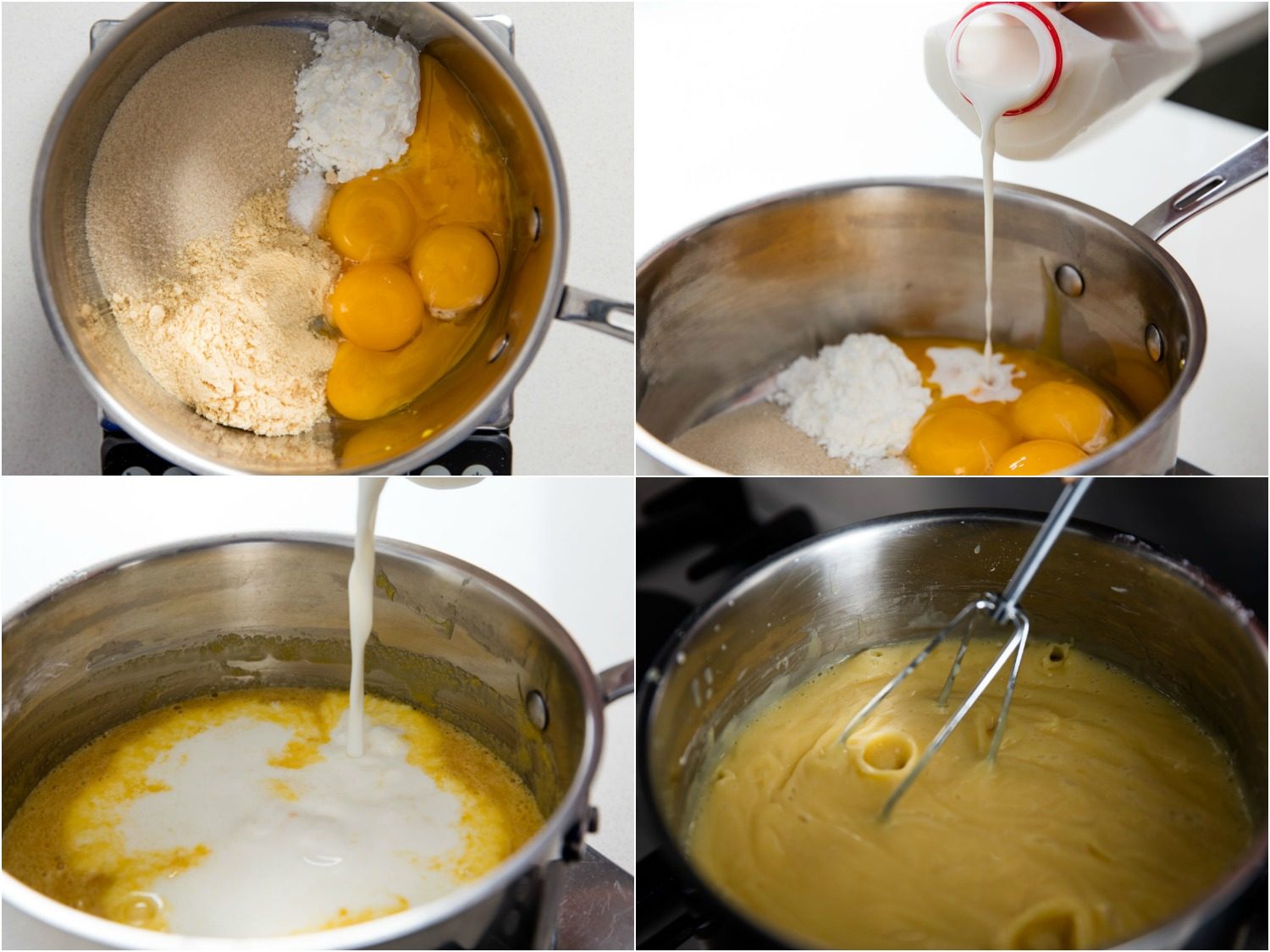
It wouldn’t be practical to take the time to cool the broth down before this final step, just to avoid scrambling the eggs. So you need to temper them, first adding some of the hot broth to the eggs, then whisking them back into the broth.
The same is true if you’re infusing milk or cream with vanilla or spices, heating them together to extract as much flavor as possible. If you were to add eggs directly to the hot liquid with a whisk, the rapid temperature change would cause them to curdle before they were fully diluted. Once again, you’d need to temper them.
But if your recipe doesn’t require any kind of preheating of the liquid phase, then tempering isn’t necessary. Simply combine the eggs with the cold liquid and any other ingredients, then set the mixture over the heat and cook, whisking, until the eggs have properly thickened things up. The early dilution and gradual application of heat minimize the risk of curdling and ensure a smooth and silky final product. This method requires constant stirring and scraping, but it’s also one-pot and no-fuss.
How to Temper: The Traditional Method
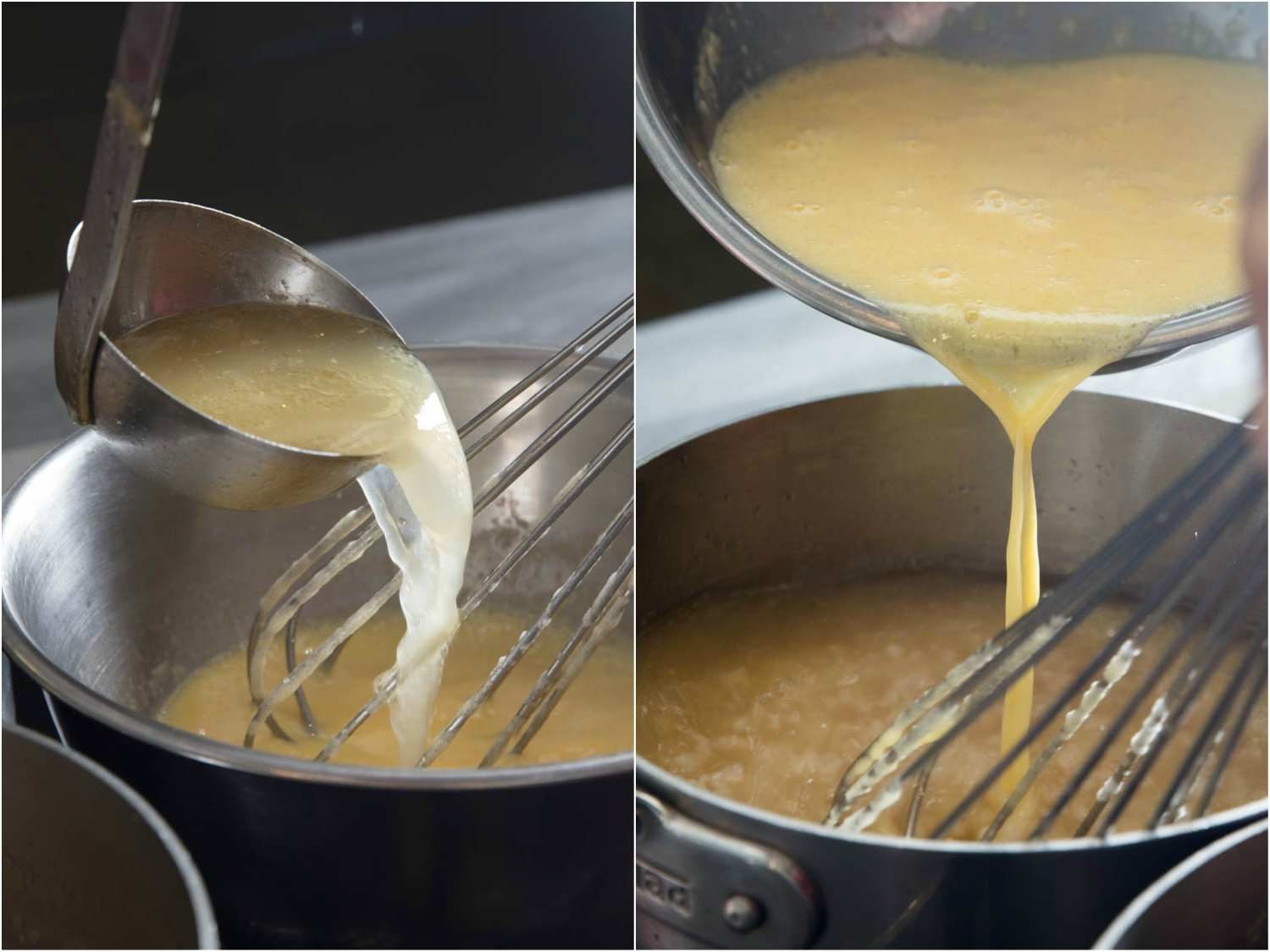
For traditional tempering, first set up a stable base with a folded kitchen towel, allowing you to whisk with one hand without worrying about the bowl spinning away. Whisk your eggs together while gradually pouring in a portion of the hot liquid in a thin stream. This dilutes the proteins while gradually warming them up. They can now be incorporated into the remaining liquid and gently cooked to the desired final temperature and texture.
This is a fast method that requires no special equipment, but it does take some coordination to pour and whisk at the same time. Plus, you still risk curdling the eggs if you add the hot liquid too quickly.
How to Temper: Rapid Tempering With a Blender
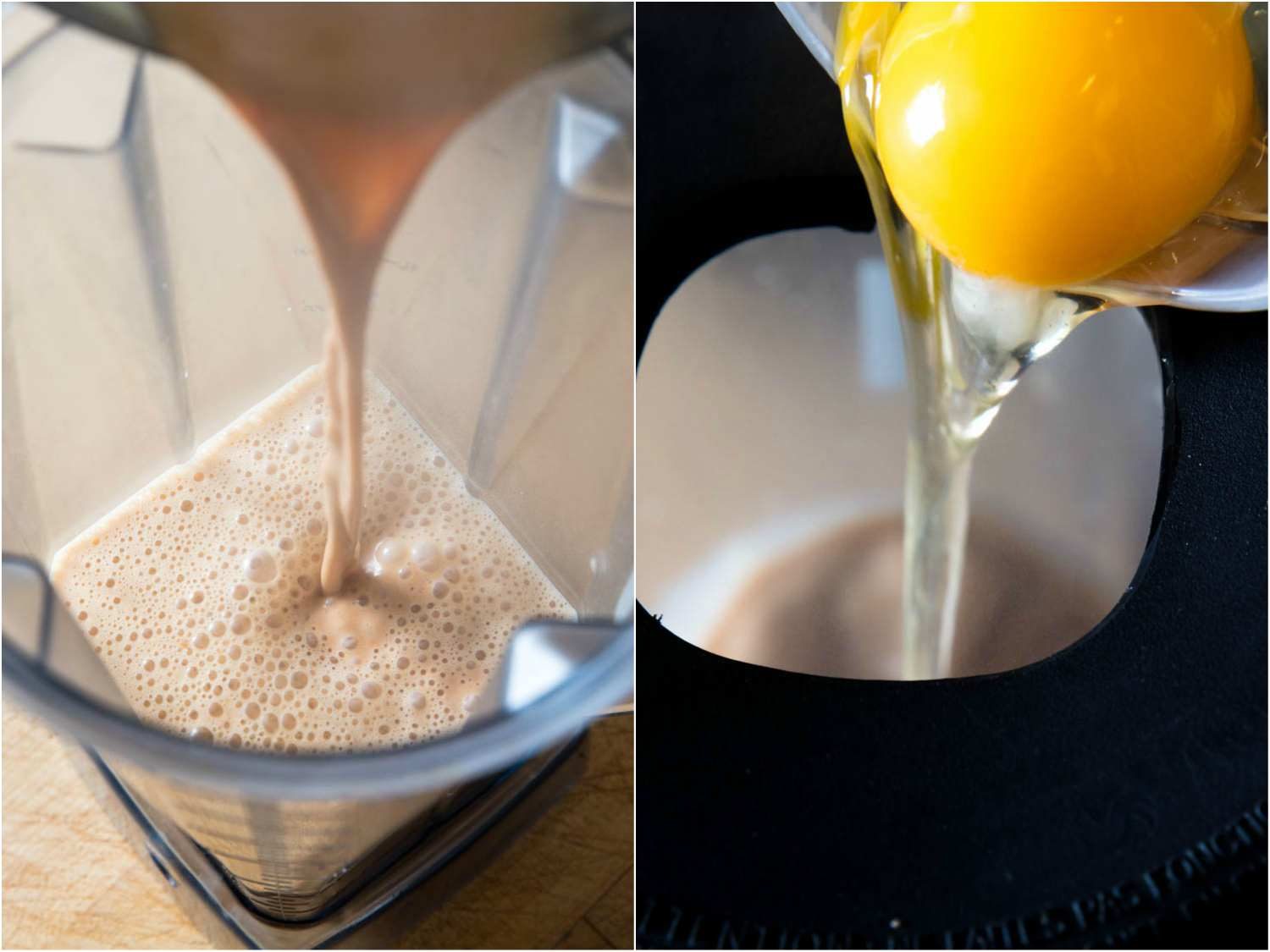
Tempering with a blender relies on dilution alone as the primary factor that prevents curdling. To temper with a blender, transfer some of the hot liquid to the canister and, with the blender running on low, add the eggs. Pour this mixture back into the pot, and finish cooking.
An immersion blender makes the process even faster. With the immersion blender running on low, just add the eggs directly to the pot of hot liquid.
The blender or immersion blender distributes egg proteins much faster than a whisk alone—so fast that they’ll be successfully diluted before curdling can ever occur. On the downside, this method requires you to bust out your blender, and then wash it.
Source link